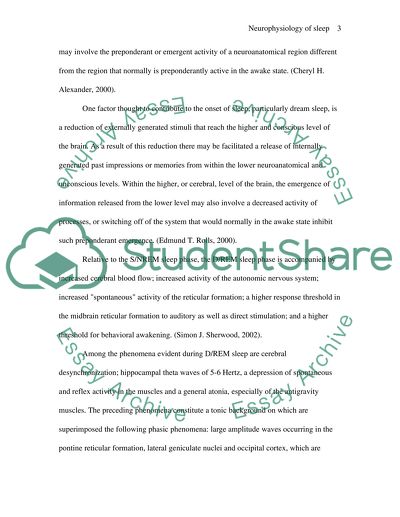Cite this document
(“Neurophysiology of sleep Essay Example | Topics and Well Written Essays - 1750 words”, n.d.)
Neurophysiology of sleep Essay Example | Topics and Well Written Essays - 1750 words. Retrieved from https://studentshare.org/psychology/1515298-neurophysiology-of-sleep
Neurophysiology of sleep Essay Example | Topics and Well Written Essays - 1750 words. Retrieved from https://studentshare.org/psychology/1515298-neurophysiology-of-sleep
(Neurophysiology of Sleep Essay Example | Topics and Well Written Essays - 1750 Words)
Neurophysiology of Sleep Essay Example | Topics and Well Written Essays - 1750 Words. https://studentshare.org/psychology/1515298-neurophysiology-of-sleep.
Neurophysiology of Sleep Essay Example | Topics and Well Written Essays - 1750 Words. https://studentshare.org/psychology/1515298-neurophysiology-of-sleep.
“Neurophysiology of Sleep Essay Example | Topics and Well Written Essays - 1750 Words”, n.d. https://studentshare.org/psychology/1515298-neurophysiology-of-sleep.


